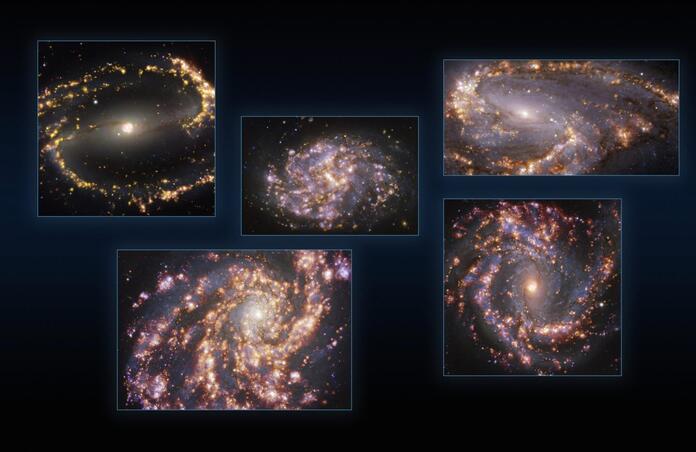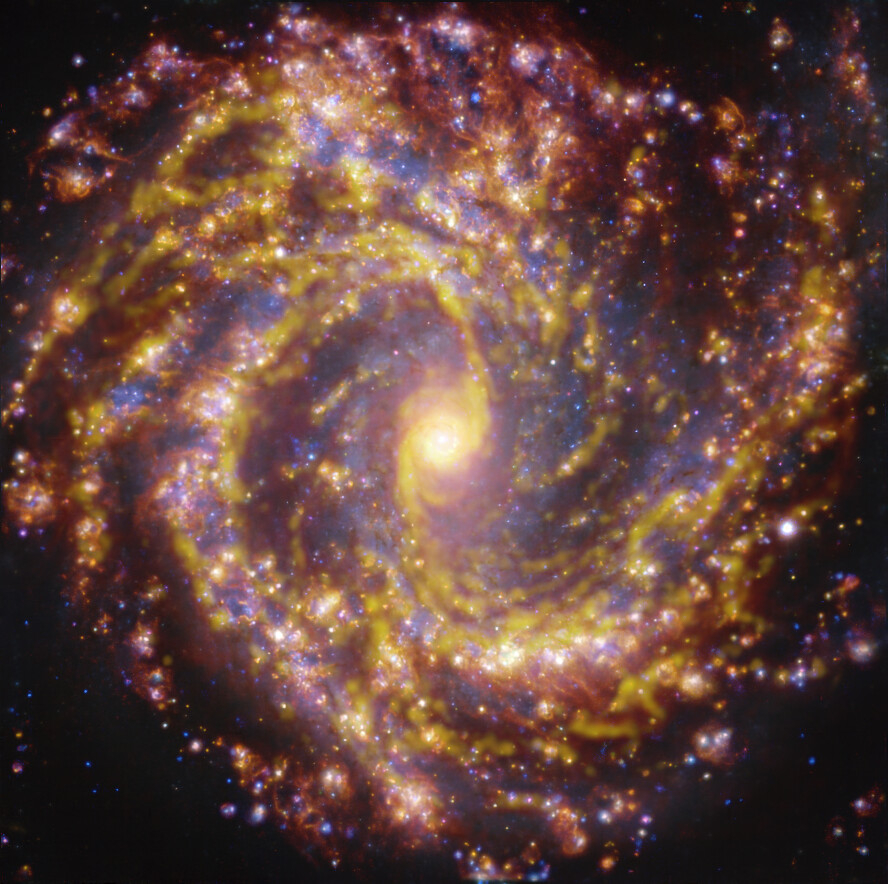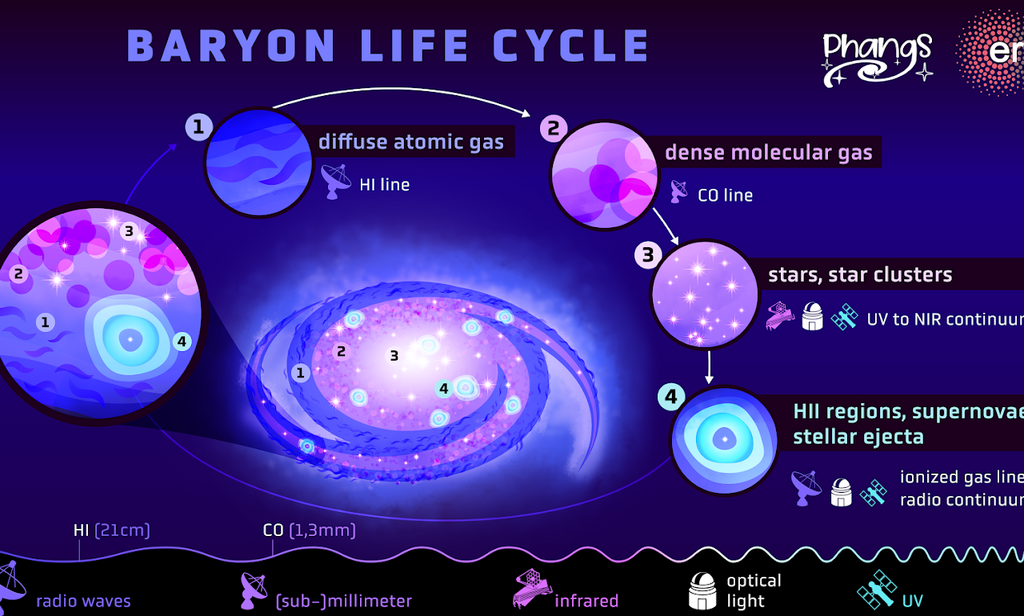The fireworks of star formation

The new images released by the European Southern Observatory (ESO) are not just straight up beautiful, they also take the research into star formation one huge step forward.

The cover image shows similar composites for NGC 1300, NGC 1087, NGC 3627 (top, from left to right), NGC 4254 and another one of NGC 4303 (bottom, from left to right)
PHANGS (Physics at High Angular resolution in Nearby GalaxieS), as the name suggests, focuses on obtained high-resolution photographs of nearby galaxies. With these wonderful images, the PHANGS team has an unprecedented sample of star-forming regions at their disposal, and that within a range of galaxy types. This is to understand the process of star formation, or more precisely how it gets triggered and what impact the galaxy as a whole has on star birth.

To answer all these questions, they combined observations from the MUSE instrument on ESO’s VLT (which you might remember from its recent involvement with the discovery of an intergalactic cloud of dust), the Atacama Large Millimetre/submillimetre Array (ALMA) in which ESO is also a partner and the Hubble Space Telescope. ALMA was used to spot cold gas clouds – the ones which provide material for star formation. Around 100 000 of these regions across 90 nearby galaxies were mapped, which led to another noteworthy result of PHANGS’ work: a catalogue of stellar nurseries. Then, MUSE was mainly used to pinpoint the location of clouds in which star formation is just starting, with new-born stars heating up the remaining gas around them. MUSE found 30 000. With the HST that can conduct observations at ultraviolet wavelengths, young clusters that have just “emerged from their nurseries” could be identified.

Putting all these together, the astronomers are challenging the generalised conception that the galactic centre contains old clusters while star formation occurs in the disk or spiral arms. A few months ago, the team published plots for 11 of the 38 galaxies they intend to study, notably showing the mass with respect to age of a cluster and its location inside the galaxy. They used a Bokeh visualization tool, and while Bokeh is a coding library, you might also know this word from photography – bokeh means blur in Japanese and is used to refer to the way a lens renders out-of-focus parts of the picture (typically a blurry background with a focused object at the centre).
What’s more, in January of this year PHANGS released the data from the HST that was used to produce the composite that we’re marvelling at now. 29 out of the aforementioned target of 38 are included and are published on the Mikulski Archive for Space Telescopes (MAST), the go-to place to obtain data from space telescope, although the ground-based Panoramic Survey Telescope & Rapid Response System, or Pan-STARRS, and Faint Images of the Radio Sky at Twenty-cm, or VLA-FIRST, are included too. It focuses on optical, ultraviolet, and near-infrared imaging, so soon the James Webb Space Telescope will be included on the list.
In fact, the JWST will add its touch to this ongoing research about star formation, as it has recently been approved to image 19 galaxies for PHANGS, this time in the infrared regime.
Cover Image: Combined images, ESO/PHANGS
Image Credits:
1 - NGC 4303, ESO/ALMA (ESO/NAOJ/NRAO)/PHANGS
2 - Baryon Life Cycle, D. Leitner for PHANGS collaboration
3 - DSS images with footprint, Lee et al./PHANGS
4 - Bokeh Visualization Tool, PHANGS/J. Turner
